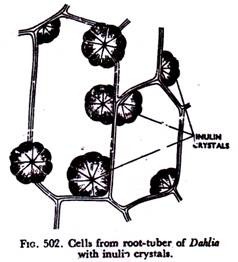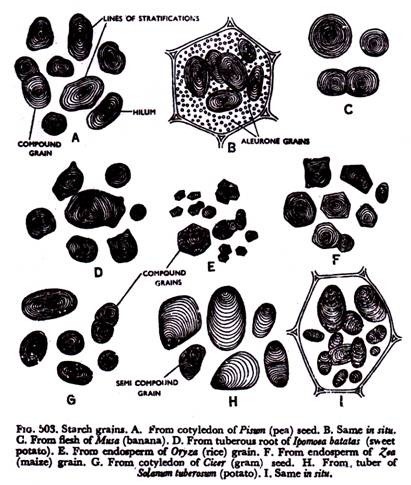ADVERTISEMENTS:
In this article we will discuss about the structure of Anthoceros with the help of diagrams.
External Morphology of Anthoceros:
The gametophytic plant body is a small greasy dark-brown prostrate, dorsiventral thallus. The thallus is usually dichotomously lobed (e.g. A. fusiformis, Fig.6.29B) or sub-orbicular (e.g. A. crispulus, Fig. 6.29 A). The thallus is often raised on a thick ascending stalk-like structure (A. erectus, Fig. 6.29C & D). Sometimes the thallus is long and pinnately divided (A. hallii) or bilobed (A. himalayensis) (Fig. 6.29E & F).
The middle part of the thallus is always without a definite midrib, although the thallus is thick. The upper dorsal surface of the thallus may be smooth (A. laevis), velvety (A. crispulus) or rough (A. fusiformis) with ridges. The lower ventral surface bears numerous unicellular, smooth walled rhizoids along the median line. Tuberculate rhizoids, scales or mucilage hairs are absent in Anthoceros.
Internal Features of Anthoceros:
ADVERTISEMENTS:
The internal structure of the thallus tissue (Fig. 6.30A) shows a very simple organisation without any cellular differentiation. The thallus is comprised of uniform, thin-walled, parenchymatous cells except the epidermis which is made up of comparatively smaller cells.
The thallus is several layers thick in the middle and the thickness of the thallus may vary from 6 to 8 cells in A. laevis to 30-40 cells in A. crispulus. The thallus, which is thickest in the middle, tapers towards the margins.
The surface cells contain a comparatively large chloroplast and are not cuticularised. Each cell of the thallus (Fig. 6.30B) shows one or more discoid or oval chloroplasts containing many pyrenoids. This is the characteristic feature of the class Anthocerotopsida. There are no air chambers or pores in the tissue of the thallus.
Instead, intercellular mucilage cavities are present which open on the ventral surface by means of narrow slit called slime pore (Fig. 6.30A & C). These mucilage cavities are always invaded by the colonies of endophytic blue green alga, Nostoc which enters the thallus through slime pores.
In addition to these mucilage ducts, some schizogenous tubular cavities are present behind the growing point. They are also filled with mucilage and run longitudinally (e.g., A. crispulus) or obliquely (e.g., A. gemmulosus) through the thallus.This mucilage may be replaced by gaseous contents in other parts of the thallus.The mucilage cavities/ducts are absent in A. laevis and A. himalayensis.
Apical Growth:
The thallus usually grows by a single apical cell (A. fusiformis) or by a group of apical cells {A. erectus, A. himalayensis). These cells are located distally in a shallow depression and remain covered externally with mucilaginous substances. Each apical cell has four cutting faces, one each on the dorsal and ventral side and two on the lateral side.
The tissue derived from the dorsal and ventral faces contribute to the thickness of the thallus, while derivatives of the lateral faces are responsible for its lateral expansion. Sex organs and rhizoids develop from the segments of the dorsal and ventral faces, respectively.


